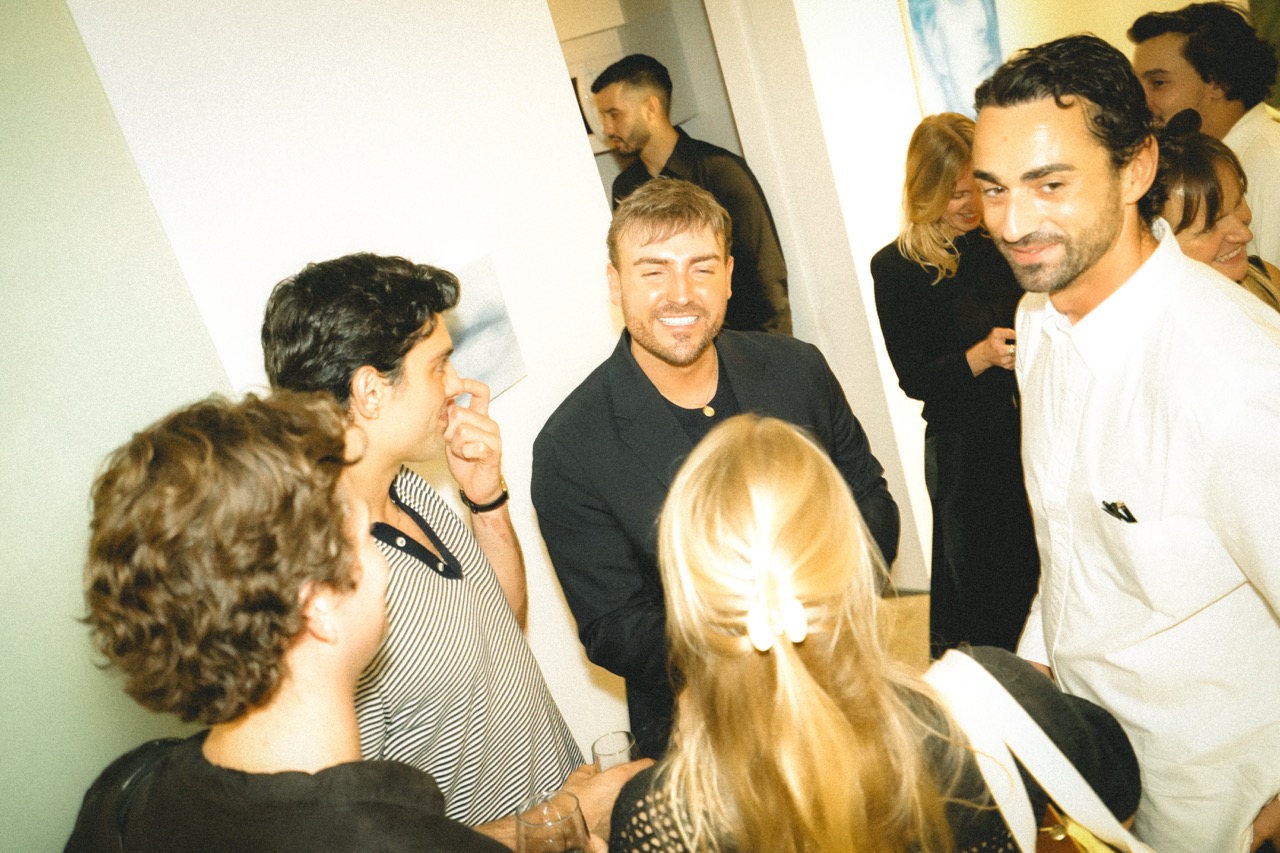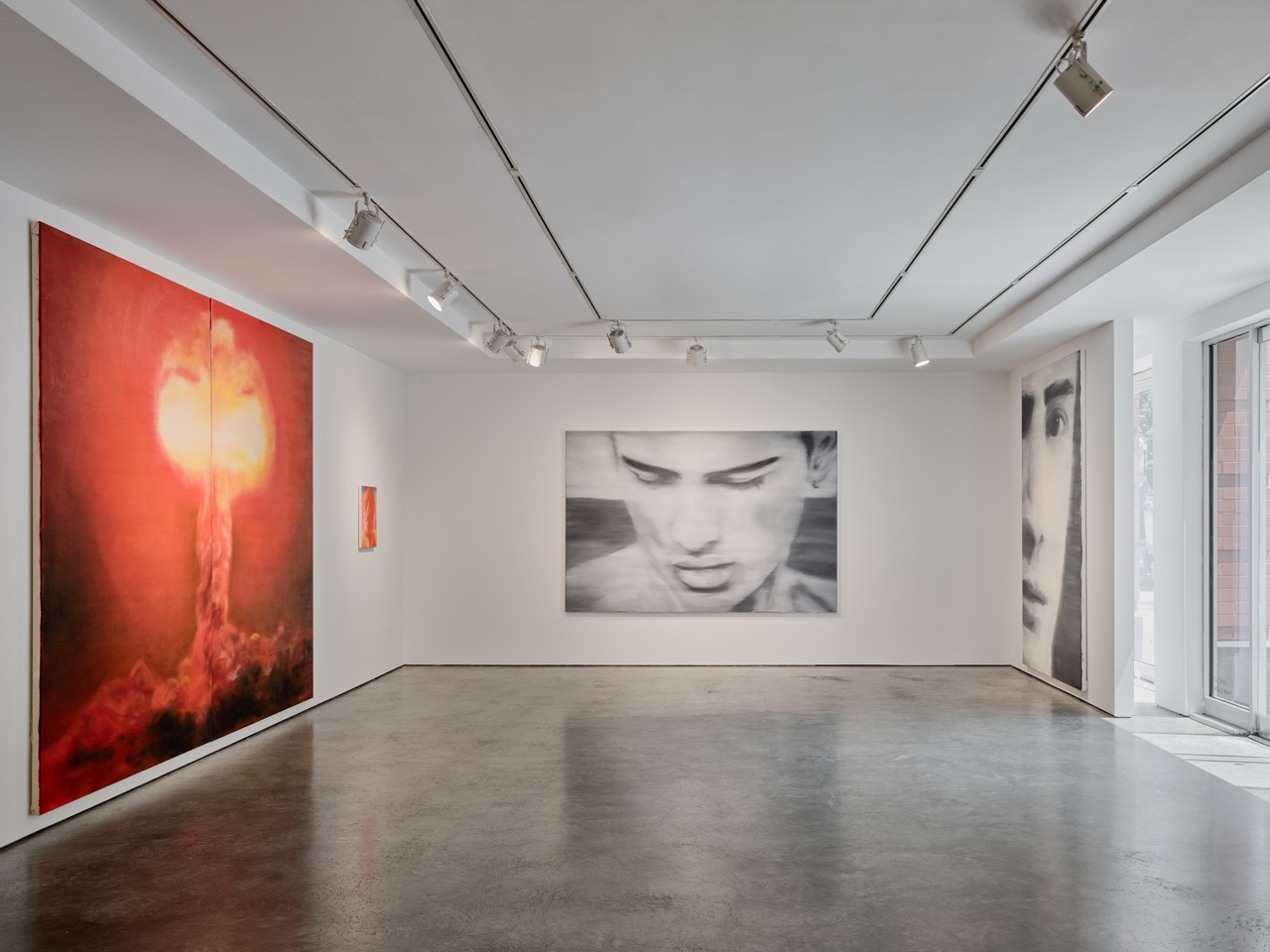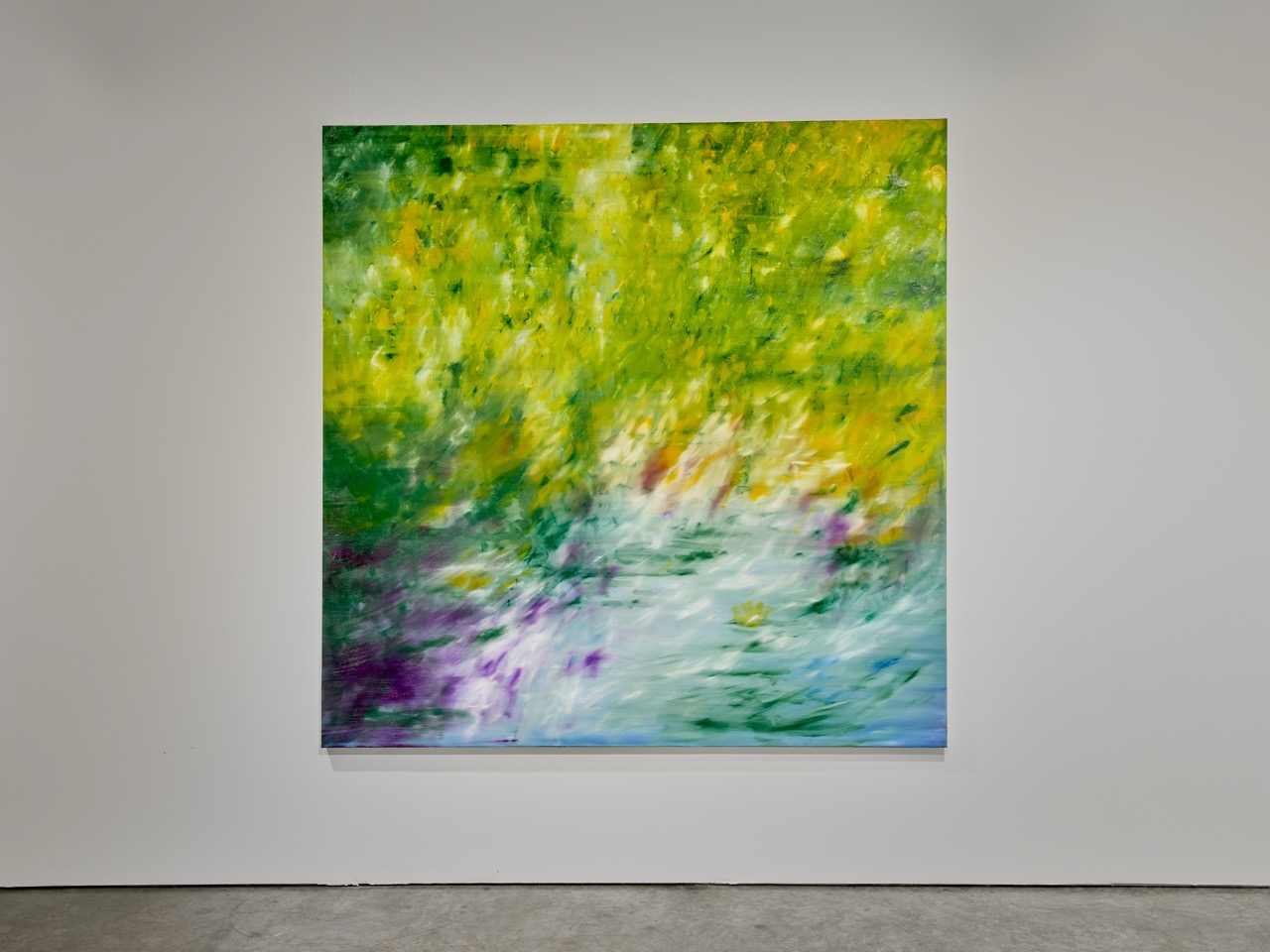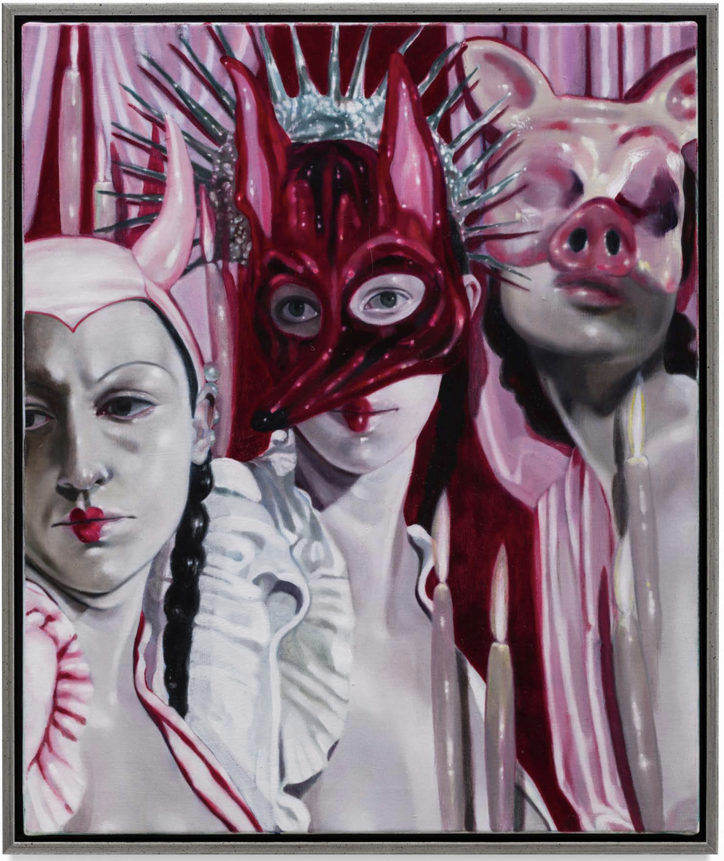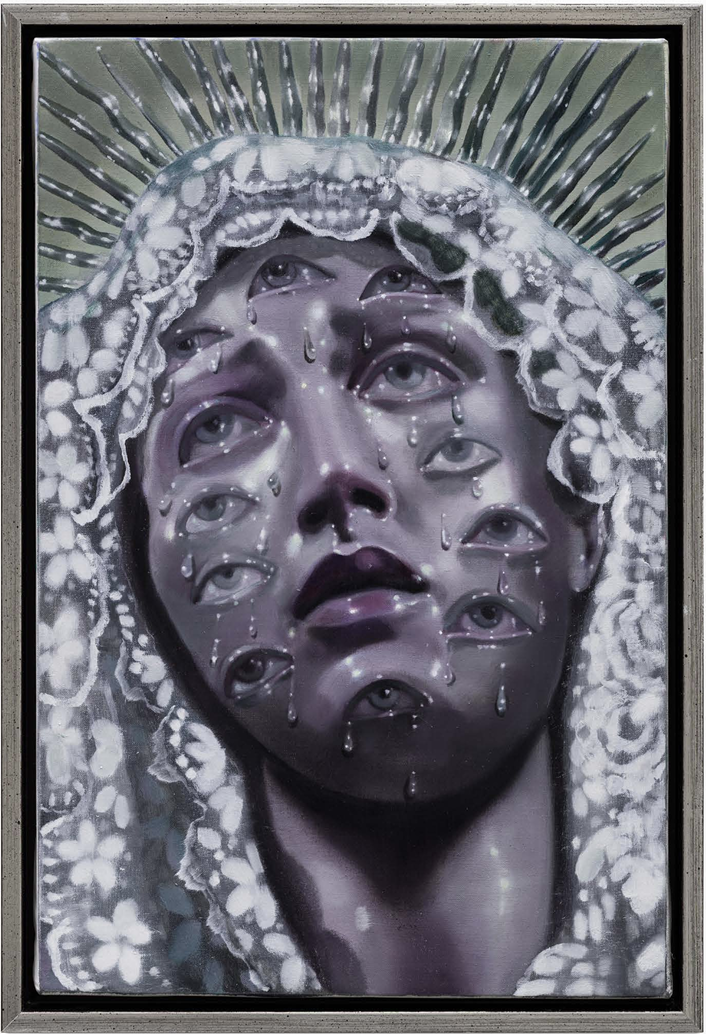Seeking the Light with Maria Vogel

Rococo launched in 2022 and organized its subsequent Rococinco dinners the same year. office dove into Maria’s art journey, discussing her primary business principles, finding your tribe, and more, below.
Even before Rococo, you were an art advisor beforehand. What incited this journey within art originally?
I feel like this is the typical path for someone who feels super creative and inspired but doesn't necessarily know where they land. And by that, I mean, when I was in college, I dabbled in so many different creative fields. I had a degree that was communications journalism and art history and throughout college, I thought I would land in any one of those places at a given time. But I later started realizing, one by one, that all of these professions after college weren't what I wanted to do. Meanwhile, art history was always there. I was always a history buff throughout my life. I learned that I could go on to study art business in a graduate program. When I am convinced of something and I want it, there's no stopping me. So it was at that moment that I decided I was going to get into this course and move to New York. What I didn't know is that there was so much more outside of positioning myself in a university context in the art world that would come and the learning curve that would come even after getting that degree. Art was never in my life growing up, at least not presented in this formal way, and then as soon as I realized it existed, I wanted to be a part of it.
I feel like when we're a bit younger, we don't even know of what jobs are out there in the creative field. So I think that's really cool that you found that pocket here and could see a future in New York City. What lessons did you learn before Rococo that you still carry with you now?
I had a pretty untraditional pathway towards Rococo in that I purposely wanted to try a lot of different roles within the art world and sponge up all the information I could from different parts of it. As soon as I felt like I wasn't being challenged or there wasn't growth available, I moved on. So that was pretty much my entire twenties. And at one point within that period of time, I worked for an advisor. I was really starting to feel like I was coming into my own through this position. So after I finished working with that advisor, I continued to advise on my own while supplementing with a full-time job. After all of those full-time jobs that I went through, I felt like I had done it all. My last full-time job, when I was ready to leave, I had this thought of, 'Okay, I think this is the moment where I go off onto my own,' and that was always something I had in the back of my head anyway. The typical art advisor is primarily a salesperson who is helping to sell art. I think my interpretation of how I operate is very different than maybe a traditional, sales-focused advisor. I'm sales-focused too, but I'm also focused on all these other considerations of how artists and people in the art world want to be treated. I used to spew a lot of negative talk toward myself because I was frustrated I could never just focus on one thing. But now I can give myself a little bit of grace and realize that all of it had intention behind it, whether it was obvious to me at the moment or not.
What were some of the practices or traditions in the advising realm that you noticed, that you decided to restructure when you went to start Rococo? I know your approach, as you mentioned, is an artist-based approach that aims to lead with a little more compassion for the artists and the people that you work with.
I think a lot of it stems from my first job in the art world, which was at a blue-chip gallery. Those are the mega galleries that have locations worldwide and rosters of one hundred-plus artists. Landing there, I felt so fortunate that I was offered a job and the gallery had a name with a lot of weight to it. And then I got there and it was a cold, shallow place — I felt like we could have been selling car tires or something because the artistry felt so distant from where I was. From where I was standing, it seemed very far off from what I thought working in a gallery or in a job in the art world would feel like. It was sterile and unpleasant to work there. And it was a very confusing moment when I was able to say, 'I don't want to be here.' Because you think when you land at that type of place, you've made it, right? So everything thereafter, I was searching for something that gave me the exact opposite feeling. I was chasing places and people within the art world that felt like the loving compassion for art was fully there.
From then, I pretty much aligned myself with positions that made me feel that way and also inserted myself in such a way that I was able to interact with artists on an individual basis. I started doing a lot of studio visits and it became a big part of my life. I've met so many of my friends through these essentially ‘cold call’ type visits and then you never know what's going to blossom out of that. And I love that you used the word compassion because I'm always approaching with that as well.
Accessibility in these spaces is something that I think is like really hard for many people to grasp. It just seems when you're younger, that these things are so far away from you — especially in the art world. It doesn't seem like these things are extremely accessible to the average person. And once they become accessible to you, it's like, 'Wow, okay, now I'm here and I have to revel in this.' But I think there's often this facade within art, and media as a whole because these things look glamorous from the outside and then you're working in it and there is a disconnect.
As soon as the veil was lifted for me, I couldn't pretend for a second that anything would change or be different. And as I got older, I had other big galleries reach out to me for job opportunities, and part of me was tempted — but I had to remind myself why I'm doing this.
But that's why I think, in your case, creating that space where you couldn't really find one that you resonated with is really important.
I think New York itself can confuse you a little bit when you land here and you have to think, 'Who am I? Who do I want to be?' Especially in inherently exclusive industries. So that was also something I definitely have carried with me — don't be the person who thinks they need to buy that outfit because they saw someone wearing it and they looked prestigious.


I've been getting glimpses into your artistic community through you, and everyone is really friendly and welcoming. I wanted to hear from your viewpoint — how you would describe the creative community that you now surround yourself with?
There's just this palpable, contagious energy that the people I work with carry where you realize that must mean they have really awesome values backing up their work. A lot of my close friends are also entrepreneurial and doing their own thing, whether it's running their own gallery, working on the tech side of art, working in PR, and so on. Some of my best friends are artists. I'm dating an artist. I'm surrounded by this beautiful bubble of both the people who are the backbone of the art world, and other people who, similar to me, are continuing to make things happen in their own very unique way. It's really anyone who has similarly approached the art world from a 'come one, come all' warm, welcoming stance that I find myself surrounded by. I have a lot of female-founder friends too. And that's really cool and exciting because it ends up being this unofficial support group. I have to pinch myself sometimes when I realize the amazing support, specifically from women in the art world, that exists surround me. Because there was a moment when I never thought that was possible. It was a saving grace.
Where did the name Rococo come from?
I'm so glad you asked that. When I made the decision about a year ago to formalize my advisory, I did not want it to be something where my name was the first thing you knew when you heard about it. Honestly, I was like, 'Who cares about Maria Vogel?' I wanted a name to carry this that wasn't mine. And Rococo, the art period, has always been one of my favorites. It's a period I felt really drawn to. And as soon as I started reading about it more, I realized that in art, every time period that comes after the one prior tries to push the limits a bit more. So Rococo was supposed to rebel against the time period that came before it, but it also translates loosely in French to 'shell' or 'rock.' Those two things are so mundane and I liked that too. It just feels like my stance on the art world which is: let's not take it too seriously.
I mean speaking of symbolism, I like that you mentioned shells and rocks — those are a possibility of what a grain of sand can become. And we're talking about the notion of transformation here, so I think there's a lot of symbolism there.
I've got goosebumps. It's easy to forget how much work went into this with my daily proceedings, so the word and the name give me so much comfort at this point.
I think that's beautiful. I wanted to talk about your dinners as well — and I was lucky enough to be there at your last one. You started Rococinco in 2022 and five contemporary artists are honored through a five-course dinner. Each dish represents the distinct style or perspective of each artist's craft. But the general format or template for it is just a bunch of friends sitting down over dinner. Why do you feel it's important to bring like-minded people together in that way over a meal? Why do you think food is the ideal vessel to celebrate these artists and their visions?
When you sit down, no matter if it's strangers or people you might know vaguely or well, there's something about having the food there that opens people up. It's a way into learning about other people. There's something that you're all sharing. You're having the same experience at the same time, and therefore it makes conversing and hopefully getting to know one another that much easier. There are so many moments of the art world that people can be in the same room and no one wants to interact with one another because of the environment or the space. It kind of rewrites what an art world event could feel like. It's an amalgamation of many different things, but I had been to many gallery dinners celebrating one artist after their show opens and I walked away often meeting really interesting people. So just having this foundation of how to speak with those around you, I find it very welcoming and open.
And I think it's a really cool visual way to show people who maybe aren't familiar with some of the work of the artists that you're honoring. I do want to dive into the five artists that were featured at the last dinner. I would love to hear why you chose each one and then what their work generally is centered upon.
So with each dinner, the idea — though there are consistencies — is that it will be shaken up each time to keep things interesting, exciting, and different. And one of those things that changes each time is how I frame choosing five artists. So the first dinner was in New York, where I've been for almost 10 years. The second dinner was in LA and featured five LA-based artists. For this most recent one, I chose five artists whose works were on view in some capacity in New York, so that everyone could go out into the world after the dinner and see that work and experience it in, hopefully, a new light. The work of each of these artists could not look more different, and yet, there are so many parallels between them and I just think that speaks for art in general.
Kenny Rivero is a Dominican-American artist, speaking through his identity with his work. He has a visual language that's very distinct to him. And that was really important for him to map out in order to understand his identity. We had Madeline Pekcenpaugh — I think her work subconsciously is the perfect amalgamation of her two parents who she grew up with, who are both artists as well. She creates her works based on the feeling that she gets while she's making them. And the end result doesn't so much matter, so I love that. Bony Ramirez is also Dominican. He immigrated from the Dominican Republic when he was 13. A lot of his work places brown people and people of color in almost the historically celebrated portraiture-type styles that you would see colonizers posed in. He distorts the figures in a way too. So it's not this prim and proper thing, but kind of this caricature meant to be a celebration of the people who made his home. He uses a lot of iconographies that are very distinct to life down there as well. We also had Devin Morris, who is a resident at the Studio Museum in Harlem this year, which is a really great honor within the art world. Three artists are chosen every year and their year culminates in a show at the MoMA PS1, so he'll have a show there in the fall, which is amazing. Devin uses found materials so he's very big on repurposing everything. He's speaking a lot about his identity, sexuality, and growing up in Baltimore, the expectations that were placed upon him in those areas, and rewriting his experience growing up in a space that had a limited understanding of what identity, sexuality, and boyhood can look like.
And then HyeGyeong Choi is from Korea and she turns modesty and femininity — these kinds of narrow constructs of womanhood — on their head. She paints figures that exude femininity, but aren't necessarily tied to a complete feminine lens. She poses them in these scenarios where they look like they're enjoying life to the fullest, lounging by water, or eating food. Usually, they're nude and they're just kind of basking and free. She's really working in direct opposition to whatever ideas of womanhood were imposed upon her and her work is very lush. Even if people know the artist's work when they sit down at the table, I hope that they get to experience it, after the fact, with a new understanding or a new experience. I think that's kind of the cool thing about it is that you can come to the table from any understanding of the art and the artists, and, I think, still really walk away with something.
You referenced going to different gallery opening dinners and bonding over a shared love of art, but then there are maybe a bunch of other things that you sit down and you learn you have in common. That feeling was something that inspired you to do this, but what is the feeling that you want people to leave with after they leave your Rococinco dinners?
The gallery dinners were the partial inspiration, but they were also jumping off points for doing something different in that I've always felt inspired and good when I leave those dinners, but if you look around the room, it's a very limited crowd. So I thought, 'How do you create something similar that invites in a lot of different kinds of people?' I want people to feel like they can interact with art and, by extension, artists, no matter where they're coming from. Artists are, for better or for worse, kind of removed from the art market in a lot of ways. They'll be at their openings, but if you don't know them are you going to go up and say hi? Probably not. I just want more people to feel like the art world is something that they can feel closely connected to.
How do you hope to continue contributing positively to the art world, advocating for the artists around you, and just leading with that sense of compassion that we talked about, maybe a few more years down the line?
I want to be seen as someone that brings people in. Whether that's working with first-time collectors who never thought that they could own a piece of artwork or an artist that's just starting out. There are so many people who take collecting and this whole world so seriously, and you have to admire that, but I want to bring people who thought they could never come to an art show or to Basel and show that, 'We can do this too.' Just helping to facilitate more and more people being interested in a part of this world.























